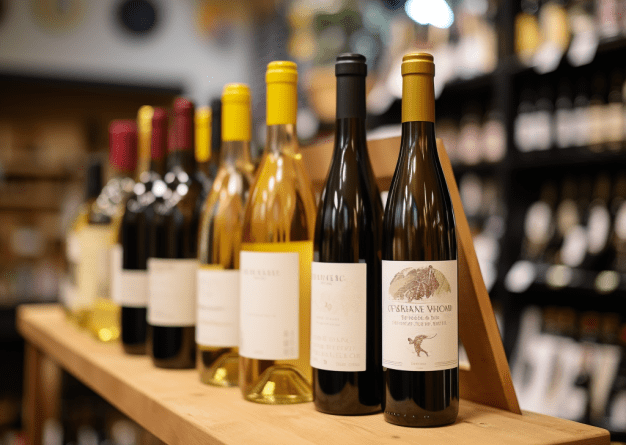
Debunking myths: Orange wine is not about oranges or Mimosa cocktails
Have you ever heard of orange wine?
No, it’s not wine squeezed from oranges.
And no, it’s definitely not a mimosa cocktail you sip during brunch.
Brief description: The unique method of making orange wine
Now, you might wonder, “What is orange wine?”
Think of it as white wine’s edgier cousin.
Made by letting the white grape skins and seeds mingle with the juice, it boasts a deep orange hue.
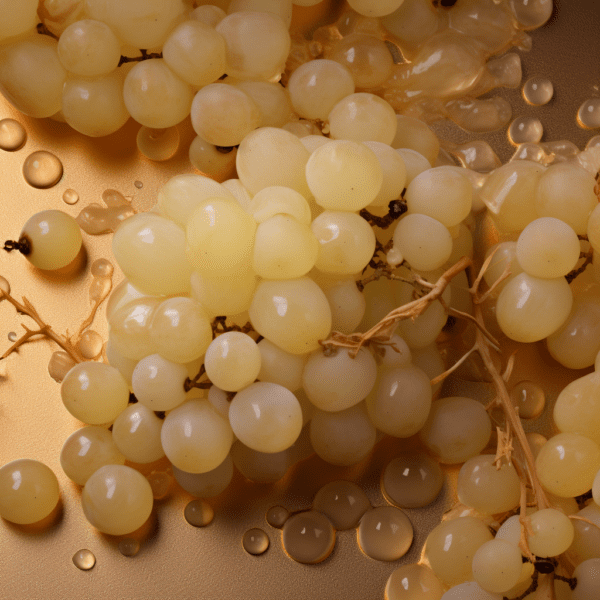
The Origin and Making of Orange Wine
A deep dive into the winemaking process: The role of grape skins and seeds
It all starts with white grapes.
Mash ’em up and place them in a large vessel, maybe cement or ceramic.
But here’s the twist: Those fermenting grapes?
They’re left alone.
Sometimes for days.
Sometimes over a year.
With the skins and seeds cozying up with the juice.
The minimalistic approach: Limited additives and natural fermentation
This wine doesn’t rely on additives.
In fact, sometimes it skips out on yeast!
What do you get?
A wine that’s different from any regular white wine you’ve tasted.
A bit sour. A tad nutty.
A nod to Simon Woolf and David Harvey: The origin of the term “Orange Wine”
Did you know?
Simon Woolf from Decanter spilled the beans that the term “Orange Wine” came from British wine importer David Harvey.
He used it to describe this unique white winemaking process.
“Ramato” – The Italian connection
Sometimes, you’ll hear the term “Ramato.”
In Italian, it means “auburn.”
It often hints at Italian Pinot Grigio made in the vibrant orange wine style.
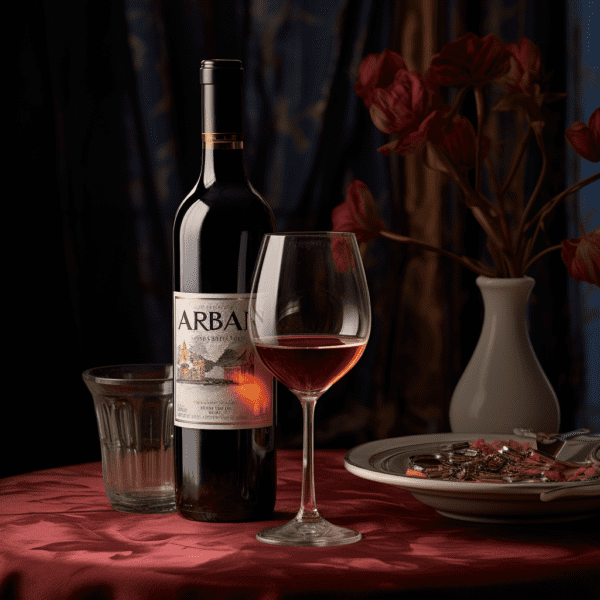
What Is the History of Orange Wine?
Delving into the annals of wine history, one realizes that, just like fashion, what’s old becomes new again.
While the term “orange wine” might sound contemporary, the process that births this rich, nuanced wine has its roots in ancient traditions.
The Georgian Legacy: From Qvevri to Glass
The cradle of orange wine can be traced back to Georgia, a nation that prides itself on a winemaking tradition that spans over 8,000 years.
The Georgians had an affinity for qvevri – clay vessels with an egg-like shape – in which they fermented whole crushed berries.
Post fermentation, these vessels were sealed, often with clay or beeswax, and then tucked safely underground.
This burial wasn’t just a ritual; it ensured the wine remained cool.
White grape varieties, particularly the revered and ancient Rkatsiteli, were often the choice for these wines.
The result?
A wine that danced between gold and amber in hue and possessed a unique acidic profile.
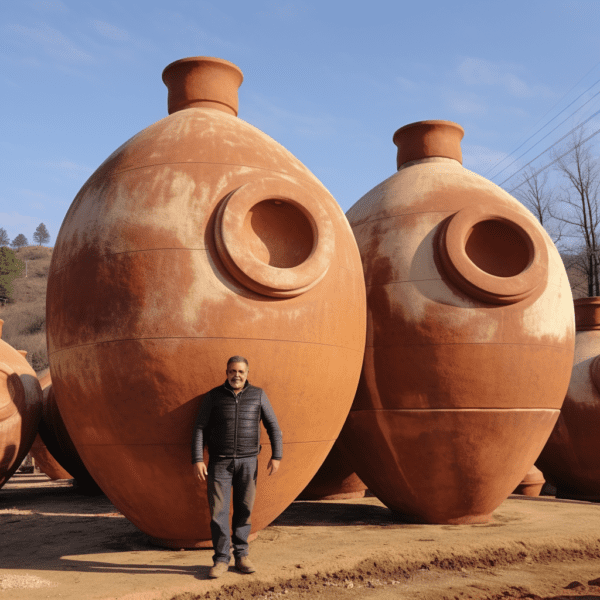
A Renaissance of Flavor and Tradition
The sands of time saw many wine practices evolve, but the 2000s heralded a renaissance for this age-old technique.
A key protagonist of this revival was Josko Gravner from Friuli-Venezia Giulia, Italy.
Inspired by a visit to Georgia, Gravner didn’t just bring back tales of Georgian winemaking; he brought the qvevri themselves.
By 2001, the Italian wine scene was introduced to orange wine, and it was an introduction that resonated deeply.
The appeal of orange wine, a harmonious blend of tradition and distinct flavor, spread like wildfire.
Today, from the scenic landscapes of Slovenia, Greece, and Portugal to the sun-kissed vineyards of California, France, South Africa, and Australia, the legacy of orange wine is being celebrated and savored.
The Distinctive Taste of Orange Wine
Setting expectations: Preparing for a bold taste experience
Brace yourself.
Orange wine isn’t for the faint-hearted.
But once you try it, you might just get hooked.
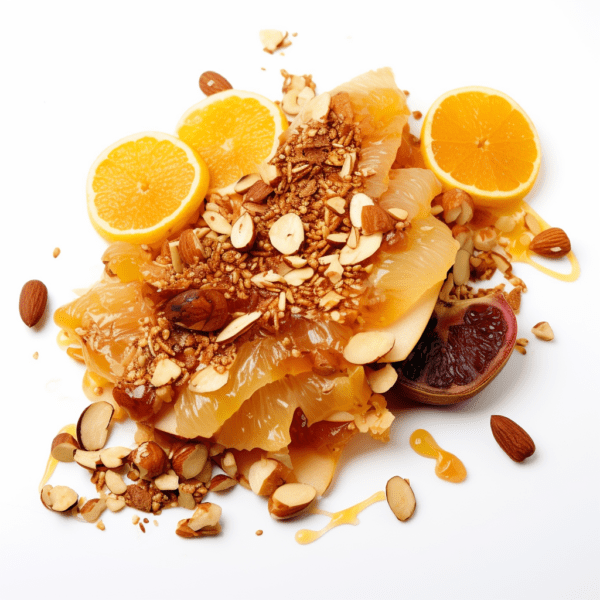
The flavor profile: A melange of tropical fruits, nuts, and unexpected notes
Imagine honeyed jackfruit, mixed with the crunchiness of hazelnut and brazil nut.
Add a slice of bruised apple.
A drop of wood varnish.
A sprinkle of dried orange rind.
That’s the aroma you’re in for.
The sensory experience: From the aroma to the tantalizing tannins
On your palate, it’s bold.
Dry. It even has tannins, much like a red wine.
And yes, there’s a sour punch, reminiscent of fruit beer.
The science behind the hue: Lignin from grapeseeds
What gives orange wine its deep color?
It’s the lignin in grapeseeds. Mystery solved!
Unraveling the Mystique: 3 Defining Characteristics of Orange Wine
Orange wines, with their myriad expressions and shades, might seem like an enigma wrapped in a bottle.
But once you dive deeper into their essence, certain patterns emerge, patterns that tell the story of their creation, their journey, and their soul.
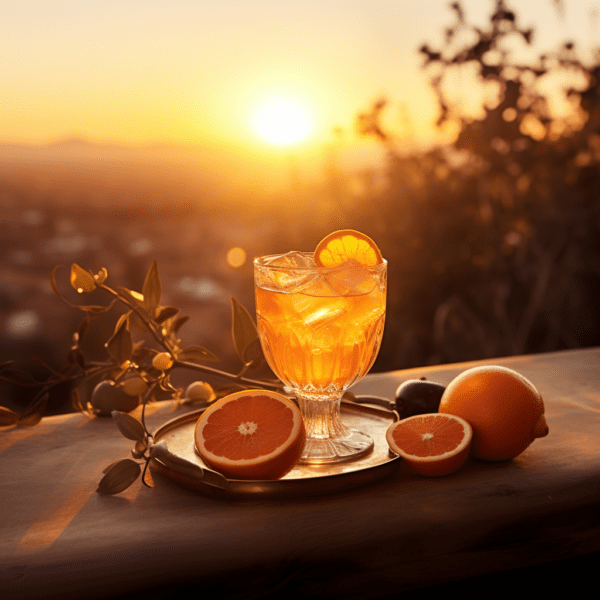
A Tapestry of Colors: Beyond Just ‘Orange’
When one hears ‘orange wine,’ the immediate image conjured is that of a drink bathed in the warm, sunset hues of a ripe tangerine.
But nature loves diversity, and so does orange wine.
This wine can effortlessly transition from the effervescent pink of dawn to the deep amber of dusk.
Then there are shades of resplendent gold and mellow yellow.
Why such a spectrum, you ask?
The canvas of an orange wine is painted with factors like the grape variety, the ripeness of the fruit when whispered secrets are exchanged between the wine and winemaker, the time spent fermenting with grape skins, the chosen vessel for fermentation, and the method of extracting the essence of the grapes.
The Tannin Tango: Texturing the Taste
The world of wines has its dancers, and tannins are the prima ballerinas of orange wine.
These naturally occurring compounds are present in grape skins, seeds, and stems.
In the realm of orange wines, they paint strokes of texture and a certain mouthfeel that can best be described as astringent.
An orange wine’s dance with tannins sets it apart from its white wine sibling, giving it a unique structure and depth.
The Dance of the Skins: Fermentation’s Role
Here’s where the magic unfolds.
‘Skin-contact wine’ is not just a term; it’s a ritual.
It speaks of white wines that share intimate moments with their skins, albeit briefly, usually just a day, before they part ways.
This short rendezvous allows the wine to imbibe a touch of the skin’s color and flavor.
However, skin-fermented orange wines commit to a deeper relationship.
They remain intertwined with the skins, in a harmonious ballet, for durations ranging from a week to a whole year.
It’s simple: shorter engagements mean a subtler dance, while longer liaisons promise passionate performances and bolder flavors.
Is Orange Wine The Same As Natural Wine?
It’s a question on the lips of many a wine enthusiast: “Is orange wine just another name for natural wine?”
Let’s clear the air: they’re not twins, but they might be cousins.
The confusion isn’t unfounded.
Both orange wines and natural wines are enjoying the spotlight, especially among millennials and Gen-Z drinkers.
This surge in popularity often leads to them being interchanged.
But here’s the essence: not all natural wines sport the orange hue, and not every glass of orange wine can claim the ‘natural’ label.
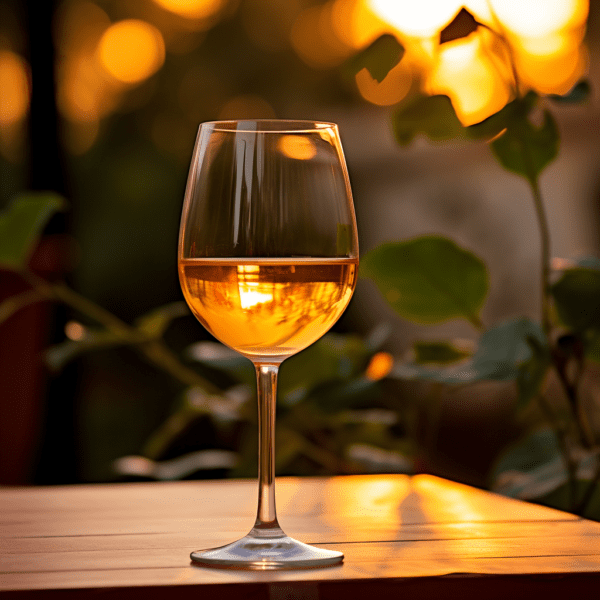
The Skin Tells the Tale
What bridges these two?
The answer is simple: grape skins.
These aren’t just the outer covering of grapes.
They’re carriers of stories, color, body, and a myriad of native yeast strains.
When we talk about the air being alive, we’re hinting at the abundance of natural yeast it carries.
These yeast strains, pioneers of fermentation, cling to grape skins and play a crucial role in winemaking.
Now, while natural winemakers place unwavering trust in these native yeasts, renouncing the idea of commercial alternatives, this practice is echoed by some (but not all) orange wine producers.
A Flavorful Analogy: Sourdough vs. Sandwich Bread
Still puzzled?
Let’s paint a picture.
Picture your average loaf of sliced sandwich bread. It’s consistent, predictable, made using commercial yeast.
Now, contrast it with a loaf of sourdough, a bread that’s a product of a wild, natural yeast fermentation.
The difference?
Complexity.
Just like how different yeasts contribute to the sour, tangy profile of sourdough, the medley of natural yeasts in wine gives it a depth and range of flavors.
Some experimental styles of orange wine lean into this complexity, taking on a fermented profile reminiscent of kombucha.
This funk is a hallmark for many natural wines, leading some to categorize orange wine under the natural wine umbrella.
But here’s the catch: it’s a broad stroke that doesn’t do justice to the diversity of orange wines.
How Should You Drink Orange Wine?
Alright, you’ve got a beautiful bottle of orange wine in your hand, and now the million-dollar question arises: “How should I drink it?”
Even though orange wine strides proudly under the white wine umbrella, its personality is as multi-faceted as its flavor.
The secret to enjoying it at its best?
Temperature.
Temperature Is Key: Light vs. Dark Orange Wine
If you’ve got a lightly tinted orange wine, think of it as a refreshing summer breeze.
Keep it cool at around 55°.
But if your wine’s hue resembles a setting sun, with deeper, richer tones, then warmer climes are its playground.
Why? Those tannins, born from skin contact, can get a tad moody if too cold, making your wine feel astringent.
For these bolder personalities, aim for a cozy environment slightly below room temperature, say around 65°.
Pairing Orange Wine with Food
The rule of thumb: Bold wine meets bold food
When it comes to food, orange wine loves company. Bold company.
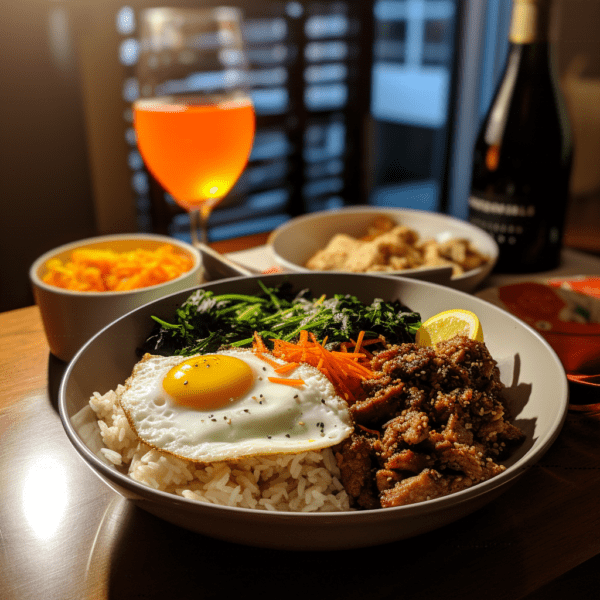
A culinary journey: From Moroccan curries to Japanese Natto
Fancy some Moroccan cuisine tonight?
Or maybe a plate of Ethiopian Injera?
How about Korean Bibimbap with fermented kimchi?
Orange wine pairs like a dream with all of them.
And let’s not forget the fermented soybeans, or Natto, from traditional Japanese cuisine.
Versatility at its best: Pairing with meats from beef to fish
Whether it’s a juicy steak or a light fish filet, this wine complements a range of meats.
It’s not just a wine.
It’s an experience.
One that invites you to explore its depths and nuances.
It’s unique. It’s bold.
And it’s taking the wine community by storm.
Dive in. Take the plunge.
Experience the allure of orange wine today!
FAQ
Q: Is orange wine made from oranges?
A: Nope! It’s made from white grapes with their skins and seeds.
Q: How long are the grapes fermented?
A: It can range from a few days to over a year.
Q: What kind of foods pair well with orange wine?
A: Bold foods like Moroccan cuisine, Korean dishes, and even Japanese Natto pair beautifully with it.
Q: Is the color natural?
A: Absolutely! The deep hue comes from the lignin in grapeseeds.
Resources:




